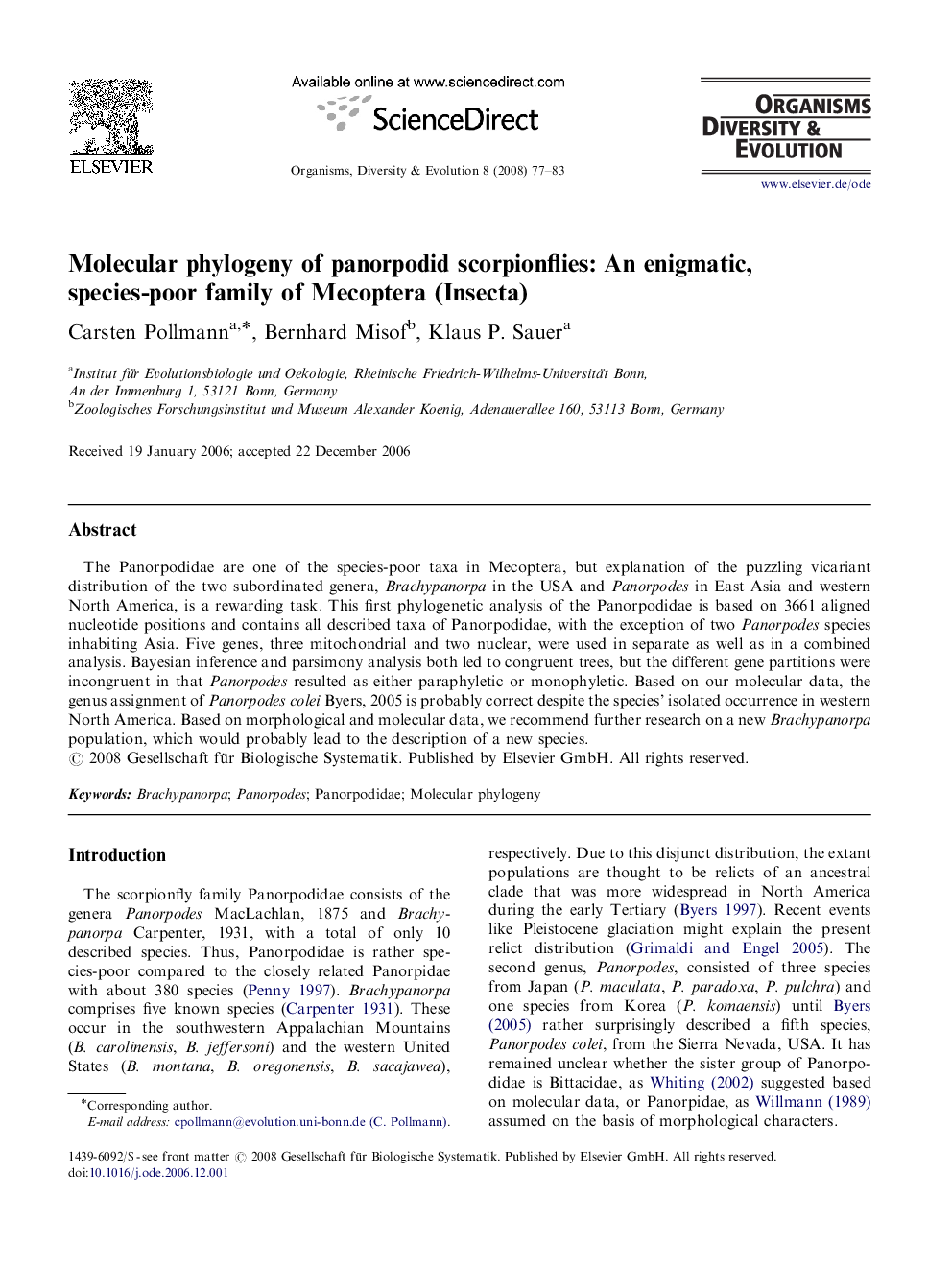| Article ID | Journal | Published Year | Pages | File Type |
|---|---|---|---|---|
| 4458676 | Organisms Diversity & Evolution | 2008 | 7 Pages |
The Panorpodidae are one of the species-poor taxa in Mecoptera, but explanation of the puzzling vicariant distribution of the two subordinated genera, Brachypanorpa in the USA and Panorpodes in East Asia and western North America, is a rewarding task. This first phylogenetic analysis of the Panorpodidae is based on 3661 aligned nucleotide positions and contains all described taxa of Panorpodidae, with the exception of two Panorpodes species inhabiting Asia. Five genes, three mitochondrial and two nuclear, were used in separate as well as in a combined analysis. Bayesian inference and parsimony analysis both led to congruent trees, but the different gene partitions were incongruent in that Panorpodes resulted as either paraphyletic or monophyletic. Based on our molecular data, the genus assignment of Panorpodes colei Byers, 2005 is probably correct despite the species’ isolated occurrence in western North America. Based on morphological and molecular data, we recommend further research on a new Brachypanorpa population, which would probably lead to the description of a new species.
